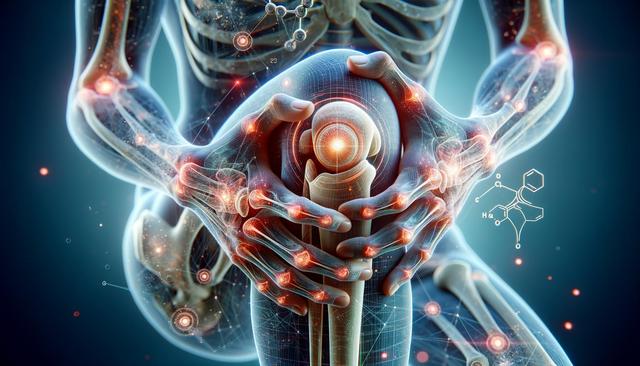Understanding Sacroiliac Joint Pain
The sacroiliac (SI) joints connect the spine to the pelvis and play a crucial role in transferring weight between the upper body and legs. When these joints become inflamed or dysfunctional, it can lead to significant discomfort, commonly referred to as sacroiliac joint pain. This condition often presents with symptoms such as lower back pain, buttock discomfort, and pain that radiates down the legs. Understanding sacroiliac joint pain is essential for identifying the right course of treatment. Common causes include injury, arthritis, pregnancy-related changes, or biomechanical stress due to uneven leg lengths or poor posture. Diagnosing SI joint dysfunction can be challenging, as it often mimics other conditions like sciatica or herniated discs. Healthcare professionals typically use a combination of patient history, physical examination, and imaging techniques to confirm the diagnosis.
Non-Surgical Treatment Options
For many individuals, non-surgical treatment options can provide effective relief from sacroiliac joint pain. These approaches focus on reducing inflammation, restoring joint function, and preventing future episodes. Initial treatment often includes physical therapy, which helps strengthen the muscles around the SI joint and improve flexibility. A physical therapist may guide patients through targeted exercises and provide manual therapy to realign the joint. In addition to therapy, supportive devices such as sacroiliac belts might be recommended to stabilize the area during movement. Lifestyle modifications, such as avoiding prolonged sitting or heavy lifting, also play a significant role in managing symptoms. Many people find that a combination of these conservative approaches can lead to meaningful improvements without the need for invasive procedures.
Medications and Pain Management
Managing pain effectively is a critical component of treating sacroiliac joint dysfunction. Medications and pain management strategies are often used in conjunction with physical therapy and lifestyle changes. Over-the-counter nonsteroidal anti-inflammatory drugs (NSAIDs) can help reduce inflammation and alleviate discomfort. For more severe pain, healthcare providers may prescribe stronger medications or muscle relaxants. In some cases, corticosteroid injections directly into the SI joint can provide temporary but targeted relief. These injections are typically guided by imaging to ensure accuracy. Other pain management options include:
- Topical analgesics applied directly to the affected area
- Heat or cold therapy to relax muscles or reduce swelling
- Transcutaneous electrical nerve stimulation (TENS) units for nerve pain modulation
It’s important to use medications as directed and in consultation with a healthcare provider to avoid potential side effects or interactions with other treatments.
Exercise and Lifestyle Modifications
Long-term management of sacroiliac joint pain often depends on consistent exercise and lifestyle modifications. These changes are designed to improve joint stability, enhance mobility, and reduce the likelihood of recurring symptoms. Exercise and lifestyle modifications should be tailored to the individual’s condition and physical capabilities. Recommended strategies include:
- Low-impact aerobic exercises like walking, swimming, or cycling
- Core-strengthening routines to support the lower back and pelvis
- Stretching exercises to improve flexibility in the hips and lower back
- Posture training and ergonomic adjustments in daily tasks
Regular movement helps keep the joints lubricated and functional. Additionally, maintaining a healthy weight can reduce undue stress on the SI joints. Avoiding high-impact activities that jar the lower back, such as jumping or heavy lifting, is also crucial. A proactive approach to physical health can greatly enhance recovery and prevent further joint issues.
When to Consider Advanced Interventions
While many individuals benefit from conservative treatments, there are cases where advanced interventions may be necessary. When symptoms persist despite comprehensive non-surgical care, further evaluation is warranted. Advanced interventions may include radiofrequency ablation, which uses heat to disrupt pain signals, or minimally invasive surgical procedures to stabilize the joint. These options are typically considered only after exhaustive use of medications and non-invasive therapies. Surgical approaches may involve fusing the SI joint to limit movement and reduce pain. It’s important to consult with a specialist to assess the risks and benefits of such procedures, as they are not appropriate for everyone. Candidates for advanced interventions often experience:
- Chronic, unrelenting pain that affects daily life
- Limited mobility despite therapy and medication
- Clear diagnostic evidence of SI joint dysfunction
Choosing to pursue these treatments should involve a thorough discussion with a healthcare provider, ensuring that all conservative options have been properly explored.
Conclusion: Supporting Long-Term Joint Health
Sacroiliac joint pain can impact daily activities and reduce quality of life, but with the right strategies, individuals can find meaningful relief. From understanding sacroiliac joint pain to exploring non-surgical treatment options and medications, each step plays an important role in recovery. Incorporating exercise and lifestyle modifications can help maintain progress and prevent future flare-ups. While most people respond well to conservative care, knowing when to consider advanced interventions ensures that persistent issues are addressed appropriately. Staying informed and working closely with healthcare professionals can support long-term joint health and overall well-being.




Leave a Reply